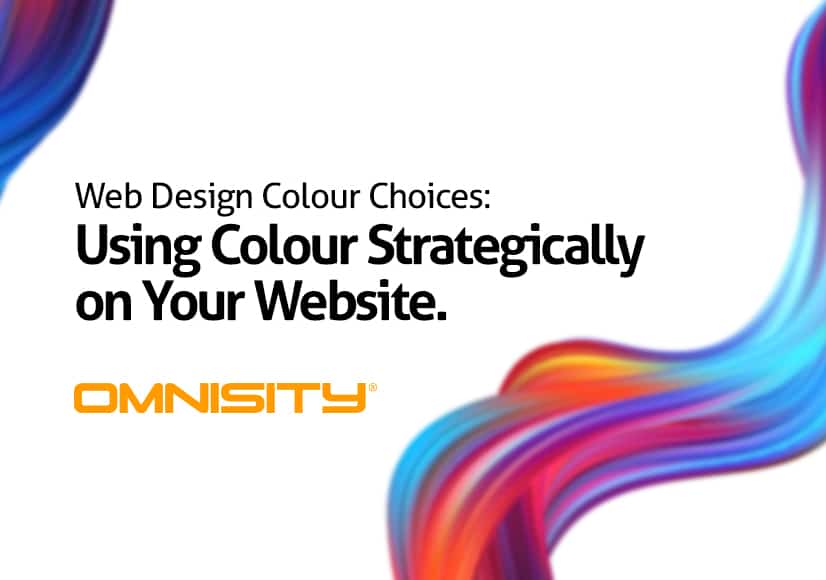Conversion Web Design Principles to Increase Sales and Enquiries
This guide is going to show you everything you need to know about conversion web design. We'll cover principles, best practices and techniques that will optimise your website for maximum conversions.
Key Talking Points:
Conversion-centred design (CCD) is a strategic approach to web design that focuses on driving visitor actions. It can be used to get more leads, sales, and signups – using persuasive techniques and psychological triggers to encourage conversions - whether that's signing up for a newsletter, making a purchase, or some other desired action.
The goal is to deliver a good user experience. CCD incorporates strategic elements such as eye-catching visuals, call-to-action’s, colour psychology, and storytelling. It's not just about creating an attractive site; it's about crafting an environment where every element pushes visitors toward your goals.
If done correctly, this method can greatly enhance your CRO (conversion rate optimisation), leading to more leads, sales, or signups.
Important Web Design Principles
Grasping design best practices will enhance the impact of your web design. Here are some important pointers:
- Create focus: Direct users towards one goal to hold their attention.
- Build structure: Structure guides visitors to action; think about information hierarchy and layout.
- Stay consistent: This will help visitors to familiarise themselves, and better connect, with your brand.
- Show benefits: Select visuals that demonstrate the value of what you're selling.
These principles form the foundation of conversion rate optimisation. Adopt these methods in your web designs to convert more visitors into customers effectively.
“Design influences the viewers emotions and decisions, a well-designed website that focuses on conversions effectively guides the viewers towards taking a desired action, such as clicking an advert, sending an email or picking up the phone.“
- Mike Danks, Lead Creative, Omnisity
Why is Design Important for Conversion Rates?
By leveraging the right design elements, you can increase your conversion rates and maximise visitor engagement. In the realm of web design, aesthetics are not just about looks; they're a key part of how to convert visitors into customers.
- Trust: A well-designed website commands trust from users which is essential for CRO.
- SEO enhancement: Search engines favour sites that are easy to navigate with good layouts and visual hierarchy, boosting your visibility.
- ROI: Investing in web design best practices significantly improves return on investment by driving conversions.
- User experience: A user-friendly design keeps visitors engaged, reducing bounce rates. This is because clean web design enables visitors to quickly find what they are looking for which also increases conversions.
Best Practices for Conversion Web Design
To maximise conversions, it's essential to apply the best practices in conversion web design. At a glance, these include:
- Implementing a responsive design that adapts to any device or screen size is essential. Because over fifty per cent of all web traffic comes from mobile devices.
- Maintaining consistent branding and visual hierarchy throughout the site, to enhance recognition and trust,
- Minimising distractions and clutter on your site – less is more when it comes to user experience.
- In keeping things simple, ensuring clear and intuitive navigation so users can effortlessly find what they’re looking for.
Recent studies revealed that sixty-one per cent of website users expect to find what they are looking for within five seconds. If they don’t they will go to another site. With that in mind, you must adopt these tips to increase user engagement and ensure users are getting what they look for when they visit your website.
Applying these simple design tips to improve conversions can help increase user engagement and boost overall conversion rates.
Optimising Your Call-to-Action (CTA)
Call-to-action (CTA) buttons play a significant role in driving user engagement and conversions. They can make or break your site's performance, as recent studies have shown. For example, personalised CTAs perform 202% better than their generic counterparts.
In the age of information overload, users tend to quickly scan web pages instead of reading them thoroughly. This behaviour necessitates the need for marketers and designers to understand the psychology behind effective CTAs. By leveraging various techniques to capture users' attention, CTAs can guide visitors towards desired actions, such as making a purchase, subscribing to a newsletter, or signing up for a service.
In optimising CTA, we recommend considering the following:
- Placement: It should be strategically positioned where users' attention is naturally drawn, such as above the fold or at the end of a compelling piece of content.
- Design: It should be visually appealing, stand out from the rest of the page elements, and use contrasting colours to grab attention.
- Text: Keep things concise, action-oriented, and clearly communicate the benefit or value proposition to the user. Personalising the CTA based on user data or segments is a good tool for boosting its effectiveness.
Testing The Effectiveness of Your CTA
Every website user is different, and understanding what resonates with them is crucial. To maximise the impact of your CTA, it’s worth experimenting with different types.
A/B split testing can be a great way of refining and improving their effectiveness. Whether it be the layout, colours or text that you’re changing, we recommend experimenting with several different types of CTA to test which works best. By setting up experiments based on certain variables and metrics, you can accurately test designs against each other and decide which one will help drive more conversions.
Testing helps you ensure that your website design is working for you and isn't just something you've assumed looks good without any actual evidence.
Simplifying Forms for Higher Conversions
Your website visitors are busy, they don’t have time to fill out long and convoluted forms. That’s why keeping your forms simple can make all the difference.
CRO specialist, Michael Aagaard, recently reported an expected fourteen per cent increase in conversion rates when he reduced his form by three fields. So don’t intimidate your visitors with complex forms. Instead, streamline your process by only asking for essential information. If you can, implement auto-fill options and progress indicators to make the process smoother and less cumbersome.
Incorporating responsive design is another crucial element in simplifying forms for higher conversions. This ensures your forms are easily accessible and functional across all devices - desktops, laptops, tablets, or phones.
Leveraging Social Proof
Leveraging social proof is all about showing your potential customers that you have, and can, deliver on what you’re promising. It’s a powerful strategy that helps build trust and influence your potential customer’s decisions, encouraging them to take action.
This tactic is driven by the psychological phenomenon of social proof. This tells us that people tend to conform to the actions and opinions of those they perceive as similar to themselves. When they see that others have had a positive experience with your brand, they are more likely to trust it and engage with it themselves.
Creating Effective Landing Pages
A “landing page” is a standalone web page that a person “lands” on after they click from an email, ad, or other digital location. First impressions matter, and this is the first thing that a lot of your customers will see on your website.
A well-designed landing page can be a game-changer for conversions. Think of your headline as the grand welcome, making sure it's attention-grabbing. Complement this with compelling subheadings and persuasive copy that clearly convey your value proposition.
Visuals aren't just about looking good - they should support your message, too. Using relevant images or videos can help illustrate points better than text alone. Remember, every part of your page should work towards encouraging conversion. So make sure each element is pulling its weight.
Utilising Visuals to Enhance Conversions
Incorporating high-quality visuals into your landing pages can significantly boost user engagement and prompt more action. Visual content, if used correctly, has the power to simplify complex information which in turn enhances conversions.
- Picture this: You're using infographics that break down complex data into easy-to-understand visuals.
- Imagine a video on your page showcasing how your product works in real life.
- Envision a fast-loading landing page where images load without delay.
- Think about the impact of captivating images that tell the story of your brand.
- Consider the benefit of interactive and dynamic visual elements that engage users. Movement in visuals like GIFs or short videos can be more engaging than static images.
Optimising these visuals not only improves user experience but also increases conversion rates. It's all about creating an immersive environment for your audience to interact with.
Urgency and Scarcity Techniques
We’ve all heard of the Fear of Missing Out. This term was popularised by British Psychologists in 2013, who defined it as:
“Pervasive apprehension that others might be having rewarding experiences from which one is absent”
If your website visitors judge your products or services as desirable, then adding that sense of urgency: a. reasserts the value of your offering, given low availability is a sign of demand; and b. encourages them to take action in fear of missing out.
You can tap into this natural aversion by using scarcity techniques. This isn’t about tricking your visitors, it’s about encouraging them to act on their desire for your products or services. For example, when your visitors are interested in your products but waiting for the “right time to buy, " these techniques can motivate customers to take action now.
To achieve this, implement countdown timers on your site. Offer exclusive deals with limited availability - it will make your customers feel special while also prompting action. Use social proof such as customer reviews and testimonials to reinforce this urgent need.
A compelling value proposition isn't just about stating what you sell, but also articulating why it's the best choice for your customers. It's about making your unique selling points clear, addressing customer pain points and providing effective solutions. It can help your business stand out from the competition and motivate customers to take action.
To create an effective message, it is important to understand what your customers truly need and how your product or service can solve their problems. Identify customer pain points and provide solutions that provide tangible benefits. Communicate persuasively, using storytelling techniques and unique selling points that highlight why your offer is better than the rest.
Through clear, concise and convincing language, you can paint a vivid picture of how much better off your potential customers would be with your solution.
By now, you should understand the importance of conversion-centred design and how it can increase your website's conversion rates.
Still unsure how to develop a conversion-optimised web design? Here at Omnisity, we provide optimised web design services for all websites. Get in touch today to learn more about how our expert team can help you.

